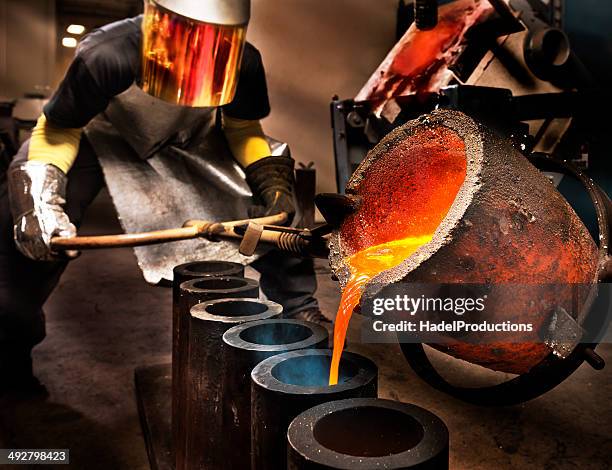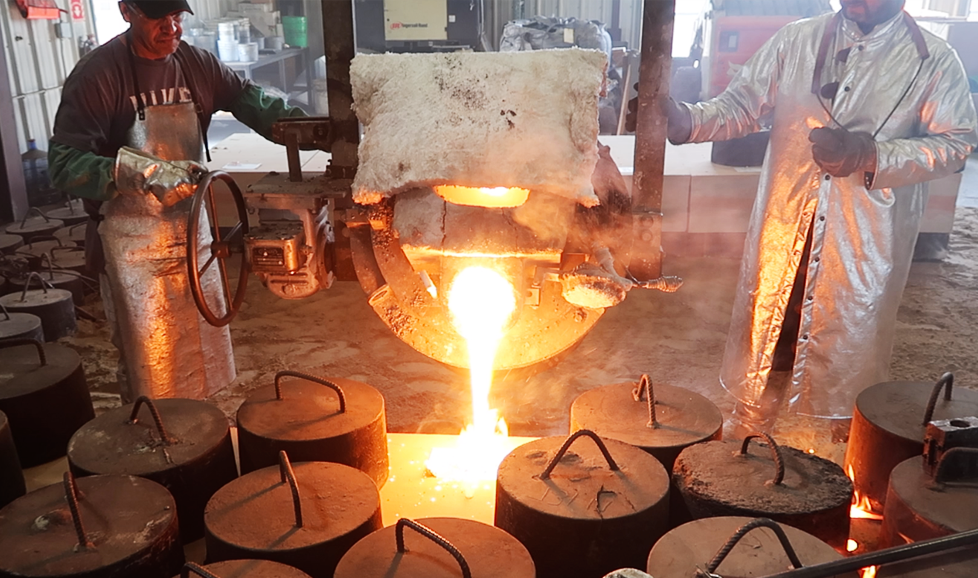Perfecting the Art of Aluminum Casting for Durability
Wiki Article
Comprehending Metal Casting Procedures: Innovations and Patterns in the Foundry Industry
The foundry sector is experiencing significant improvements driven by technical advancements. Technologies such as 3D printing and fabricated intelligence are reshaping metal casting processes, boosting effectiveness and precision. Lasting methods are acquiring traction, highlighting the significance of environmental obligation. Furthermore, the intro of innovative materials and automation is boosting general casting quality. These developments suggest a critical shift in the sector, questioning concerning future directions and ramifications for producers.Advancements in 3D Printing for Metal Casting
Recent improvements in 3D printing innovation have actually significantly transformed the landscape of metal casting. The integration of additive manufacturing strategies has made it possible for the rapid production of complex patterns and molds that were formerly hard or difficult to accomplish with standard techniques. By making use of materials such as sand and steel powders, suppliers can produce intricate geometries that improve design flexibility and lower material waste. This technology not just quickens the prototyping process however likewise permits for the personalization of parts customized to details applications.
In addition, 3D printing facilitates shorter preparation, which is crucial in industries calling for fast turn-around for components. The modern technology likewise supports the manufacturing of lightweight structures, therefore boosting energy performance in final product. Because of this, the foundry sector is seeing a change in the direction of even more lasting practices, driven by the effectiveness and precision used by these contemporary 3D printing techniques in steel casting processes.
The Role of Artificial Intelligence in Precision Production
As industries significantly embrace advanced manufacturing innovations, expert system (AI) is playing a crucial duty in improving precision production procedures. AI formulas examine huge datasets to identify patterns and optimize production criteria, resulting in improved precision and effectiveness. In metal casting, AI help in predictive upkeep, reducing downtime by projecting devices failures prior to they happen.AI-driven simulations enable producers to design the casting procedure, refining layouts and minimizing problems. Machine understanding strategies improve quality assurance by detecting anomalies in real-time, thereby making certain that only products fulfilling rigorous specs proceed via the assembly line.

Lasting Practices in the Foundry Market
Sustainability has arised as an essential emphasis in the foundry industry, triggering suppliers to take on techniques that minimize ecological impact while keeping efficiency - Metal Foundry. One famous strategy consists of the recycling of products, particularly steels, which significantly reduces waste and energy usage. Shops are progressively executing closed-loop systems, permitting the reuse of sand and various other casting materials, thus lessening the requirement for virgin sourcesFurthermore, energy-efficient technologies, such as electrical heaters, are gaining traction, as they reduced greenhouse gas emissions compared to typical methods. Several factories are exploring the use of green finishes and naturally degradable binders to decrease hazardous by-products. Employee training on lasting methods has likewise come to be important, try this web-site promoting a culture of environmental duty within organizations. On the whole, these sustainable practices not only contribute to ecological conservation but likewise improve the lasting stability of the foundry industry in a progressively eco-conscious market.
Innovations in Products for Enhanced Casting High Quality
With the constant advancement of the foundry market, advancements in materials have come to be crucial for improving casting high quality. Advanced alloys and composite materials are progressively being utilized to boost mechanical homes and decrease flaws in spreadings. These products commonly use exceptional strength-to-weight proportions and improved resistance to corrosion and wear, dealing with the demands of modern applications.Additionally, the consolidation of nanomaterials is acquiring grip, enabling finer microstructures that lead to boosted surface finishes and dimensional accuracy. Aluminum Foundry. 3D printing innovations likewise contribute in generating complex geometries with minimal waste, allowing the usage of specific materials that were previously testing to cast
The growth of ecologically pleasant binders and ingredients adds to sustainable practices while preserving top notch end results. Jointly, these advancements not just improve the efficiency of actors items however likewise line up with the market's shift towards sustainability and efficiency.
Automation and Robotics in Metal Casting Processes
Automation and robotics are transforming steel casting processes by boosting and useful source simplifying procedures precision. In contemporary factories, robotic systems are used for tasks such as mold and mildew handling, pouring, and completing, considerably reducing human treatment. This not only reduces the danger of accidents but additionally guarantees regular top quality in manufacturing.Automation modern technologies, such as computer mathematical control (CNC) makers, help with elaborate layouts and complex geometries that were formerly challenging to attain. Real-time information analytics allow manufacturers to keep an eye on processes and maximize efficiency continuously.
Check The assimilation of automation causes increased performance and performance, enabling foundries to meet expanding market demands while minimizing lead times. As the sector embraces these advancements, the workforce is additionally progressing, needing new abilities to run and preserve advanced equipment. On the whole, the adoption of automation and robotics is an essential fad shaping the future of metal casting procedures.
Regularly Asked Inquiries
What Is the History of Metal Casting Strategies?
Metal casting methods go back to ancient worlds, with proof of bronze casting in Mesopotamia around 3000 BCE. Over centuries, approaches developed greatly, including developments in materials and modern technology, forming modern-day commercial methods.How Does Metal Casting Effect the Atmosphere?
Metal casting considerably influences the atmosphere via power consumption, discharges, and waste generation. Innovations in lasting techniques and modern technologies intend to reduce these impacts, advertising more environmentally friendly methods within the market.What Safety And Security Measures Are Important in Shops?

What Are Usual Defects in Metal Casting Products?
Usual defects in steel casting products consist of porosity, contraction, misruns, cool shuts, and surface blemishes. These issues arise from variables such as inappropriate temperature control, poor mold style, and contamination throughout the casting process.How Do Foundries Make Certain Quality Assurance in Casting Processes?
Shops implement strenuous quality assurance actions through normal examinations, standardized testing, process monitoring, and adherence to market criteria. These techniques aid recognize defects early, making sure the honesty and integrity of the last casting products.Technologies such as 3D printing and artificial intelligence are reshaping metal casting procedures, improving efficiency and precision. Current improvements in 3D printing modern technology have considerably changed the landscape of metal casting. Automation and robotics are reinventing steel casting procedures by simplifying procedures and enhancing precision. Metal casting strategies date back to ancient human beings, with evidence of bronze casting in Mesopotamia around 3000 BCE. Common issues in steel casting products include porosity, shrinking, misruns, cold shuts, and surface blemishes.
Report this wiki page